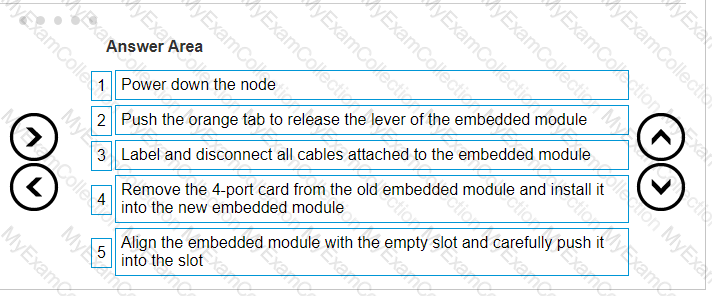While on-site installing a Dell EMC PowerStore system, the node A and B embedded module fault LEDs are alternating blue and amber (blue for 3 seconds). What does this
indicate?
What is the result of setting a VLAN ID of 0 on a network when running ICW for Dell EMC PowerStore?

Refer to the exhibit.
What is indicated when the circled LED on an expansion enclosure is illuminated amber?
Which component can be replaced while the Dell EMC PowerStore is up and running?
A Storage Administrator notices two fans in a Dell EMC PowerStore are faulted. What describes the system behavior in this circumstance?
When planning for a Dell EMC PowerStore T implementation, what is the minimum number of IP addresses required for the storage network?
Match the base enclosure SAS ports in column A to their corresponding expansion enclosure LCC ports in column B; when connecting a PowerStore base enclosure to a single expansion enclosure.

A Storage Administrator has an existing single appliance Dell EMC PowerStore 3000T cluster. An additional PowerStore 9000T has been purchased to add into the existing cluster.
How does the administrator proceed?
Under which condition does the Dell EMC PowerStore equipment in the rack require additional stability?





